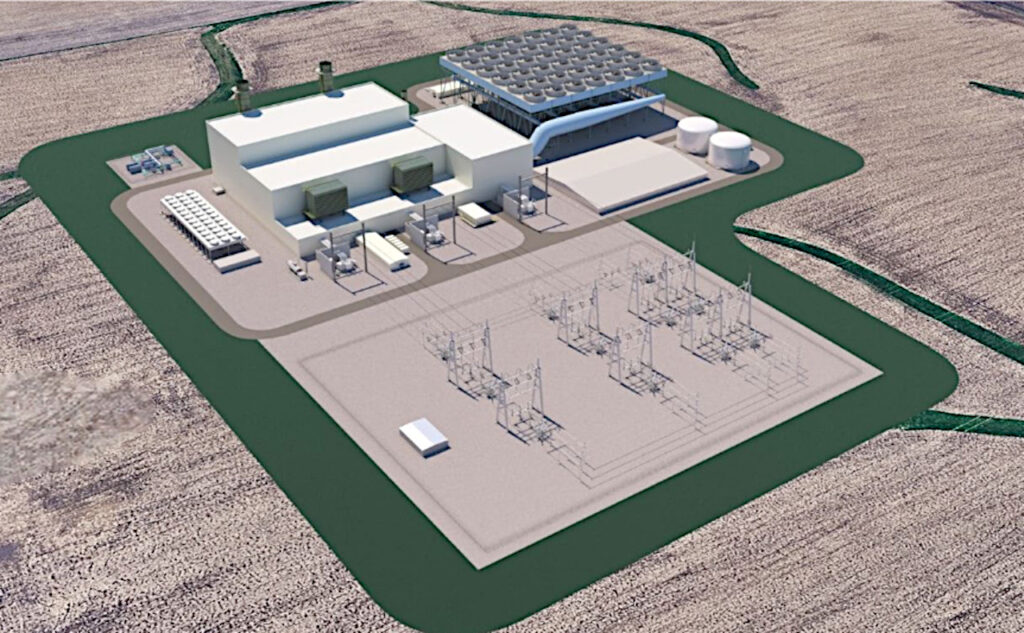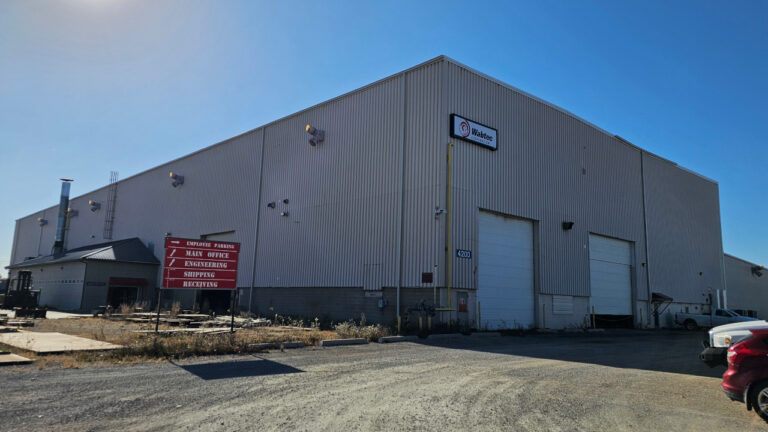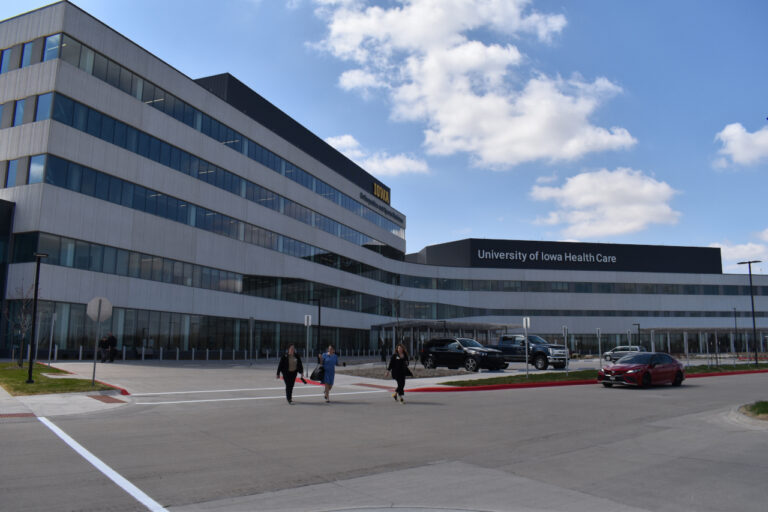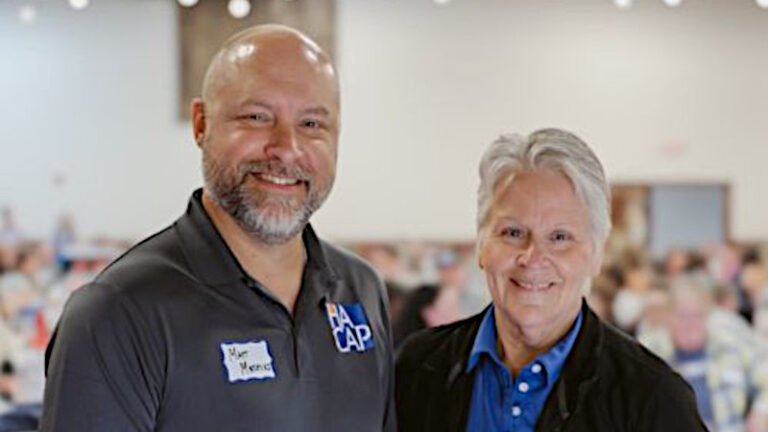Attendees of a Fairfax City Council meeting Tuesday night, Sept. 9 offered decidedly mixed perspectives on an Alliant Energy proposal for a combined-cycle natural gas power plant just southeast of the Fairfax city limits.
An estimated 45 attendees packed the Fairfax council chambers for the lengthy meeting, some saying the proposed plant would provide excise tax benefits for the city and others citing concerns about environmental impacts, noise and quality of life for the largely residential community of around 2,900 people just southwest of Cedar Rapids.
The meeting was held for Alliant to formally present details of the proposed plant to the council. Larry Harder, a senior technical analysis manager at Alliant, said the plant would be located on 25 to 30 acres of land already owned by Alliant along 76th Avenue SW.
Mr. Harder said the facility would be composed of two combustion turbines, two heat recovery steam generators and a steam turbine, for a total of three power generators.
It would be similar to gas-powered facilities including the Emery Generating Station in Mason City and the Marshalltown Generating Station, but Mr. Harder said that while those facilities use wet evaporative cooling towers to cool their exhaust steam, the Fairfax plant would employ an air-cooled condenser – “akin to a car radiator,” he said, but on a larger scale.
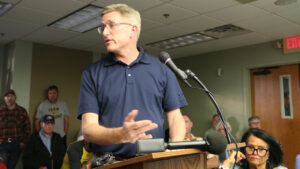
“Essentially, the steam will be leaving the plant and going through (the) air-cooled condenser, not generating a (vapor) plume,” he said. “That also greatly reduces water consumption and wastewater generation.”
Most of the plant’s equipment would also be located indoors, Mr. Harder said, reducing noise and improving resiliency.
The main generation portion of the plant would be in a building about 140 feet high, Mr. Harder said, and two cooling towers could be from 190 to about 240 feet tall.
According to minutes from a Fairfax Planning and Zoning Commission meeting in July, Alliant officials have said the plant could generate about 850 megawatts of electricity. That’s enough to power 400,000 to 900,000 homes.
While power usage from the Fairfax plant would not be specifically designated for any particular purpose, Alliant officials have previously said that electrical demand from two data center projects south of Cedar Rapids, being developed by Google and QTS, will dramatically increase the power demands for the area.
The plant itself will be about 130,000 square feet, according to the meeting minutes, and 25 to 30 employees will be at the plant during normal operations.
The permitting process for the proposed plant is complex, and would require a series of approvals and permits from the Iowa Utilities Commission, as well as local and state agencies.
Alliant has previously indicated they hope to present the plan to the IUC this fall, with permitting and design in 2026, and construction from 2027 to 2030. The plant would tentatively begin operation in 2030.
Alliant’s investment in the project could exceed $1 billion, according to the meeting minutes.
The plant would be located about three miles northwest of the Eastern Iowa Airport, and airport officials have expressed several concerns about the project, including the potential for lowered visibility due to water vapor plumes from the plant’s exhaust stacks, pilot concerns about approach angles and proximity to a proposed third airport runway, which is not currently under development but has been in the airport’s long-term plans for decades.
Alliant reportedly has other possible sites for the plant, but they have said the location near Fairfax is preferred because they already own the land and the plant’s close proximity to existing electrical infrastructure would lower development costs.
“We are still in the site selection process for our proposed facility,” an Alliant spokesperson said in response to a CBJ inquiry. “To clarify, we never settled on a specific site, and we continue to engage in active discussions with stakeholders to identify a solution that best serves the region. Maintaining confidentiality throughout this process is essential to securing a cost-effective outcome for our customers.”
Eastern Iowa Airport director Marty Lenss reiterated the airport’s concerns with the proposed power plant site near Fairfax at Tuesday night’s meeting, noting that safety concerns “were best summarized in letters from the pilots themselves,” which were included in a Cedar Rapids Airport Commission meeting packet in August.
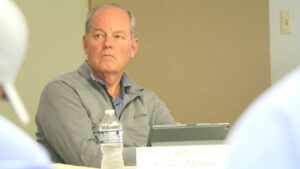
He also noted that a study commissioned by the airport to evaluate the specific potential impacts on airport operations is expected to be completed soon.
“I think the biggest concerns the airport had was the height of the towers, the location and in terms of proximity to the runway, end of the approach,” Mr. Lenss said. “Plumes were some of the concerns.”
He also noted that “plume studies” are a largely uncharted challenge for the aviation industry.
In council discussion of the proposal, council member Tom Nurre said that when he and other city leaders have visited the Marshalltown gas-fired power plant, they felt noise levels near the plant were barely discernible over ambient sounds in the area, “which surprised me,” and that they didn’t notice a vapor plume from the towers.
He noted that the meeting had provided him, and other local residents, with information they hadn’t previously known, and that more information can still be gathered before city leaders reach conclusions on the project.
City officials also noted that the city could gain substantial revenue from the plant. Currently, Fairfax collects just over $11,000 from utility excise taxes, while Marshalltown, with a natural gas power plant already in operation, receives nearly $1.6 million in utility excise tax revenue.
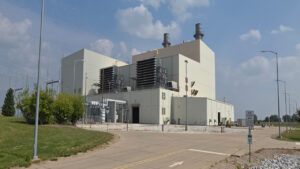
“Before we really make a decision … get all the information, look at the pluses and minuses,” he said. “I have a few things that I would like to see first before (making a decision).”
During the council’s consideration of a zoning code amendment that would allow a “special exception” to the city’s heavy industrial code for power plants, several audience members offered comments, mostly in opposition to Alliant’s plan.
Fairfax resident Torrie Lefebure Lewis said based on data from the Marshalltown natural gas plant, she felt the Fairfax plant could produce several harmful emissions, from carbon dioxide to nitrogen oxide, sulfur dioxide and methane. She also said the plant would be located close to the city’s sports complex.
“My main concerns are with the health and well-being of our community,” she said. “A power plant would be detrimental to the aesthetics, cleanliness and safety of our city. As you consider the exception proposal that can pave the way for a power plant near Old Fairfax, a close residential area, I urge you to take a step back and ask, have we done enough to understand the risks?”
She also mentioned concerns raised in a Stanford Law School report in March 2025 on the health impacts of another proposed natural gas power plant, the Nemadji Trail Energy Center in Douglas County, Wisconsin.
According to public records, an air quality permit for the Wisconsin plant was withdrawn in October 2024, but the proposed project’s developers, Dairyland Power and Minnesota Power, said at that time the project had not officially been scrapped, and in June 2025, the U.S. Army Corps of Engineers issued a notice to proceed for the proposed $1 billion project.
But according to an August 2025 Wisconsin Public Radio report, despite the fast-tracking of federal permits, local opposition might still doom the NTEC project.
Superior Mayor Jim Paine said it’s no surprise the Trump administration issued the permit, but he said it won’t matter.
“I’m sure they’re pleased about that, but this is a dead project. There is no meaningful path to construction for NTEC,” Mr. Paine said.
Ms. Lefebure Lewis also distributed a petition that she said bore the signatures of more than 100 Fairfax residents, all opposed to the Fairfax project.
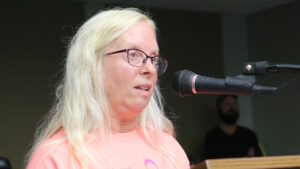
“We’ve heard arguments that this development is about long-term economic growth or a future runway that’s maybe 25 years away, but our health, our air, our safety and our peace of mind are on the line now,” she said. “So I respectfully ask, Have you spoken directly with your constituents about this? Have you heard any support for this proposal from residents, aside from those with a vested interest?”
Rita Nehrling, another Fairfax resident, said she felt the community as a whole didn’t have enough information so far about the project.
“We’re going to lose that small-town feeling,” she said. “No one wants to live next to industry. A lot of people are already really concerned about the data centers. I know we can’t stop that. It’s already in motion, but we can stop this. Everyone (has) told me they don’t want to live by a power plant.”
Later in the meeting, the council voted, on a split 3-2 vote, to approve the first reading of the ordinance that would amend the city’s heavy industry zoning code to consider a special exception for power plants, but officials stressed the ordinance will require two more readings at subsequent council meetings to become law – and in any case, they said, the change doesn’t mean a new power plant would automatically be approved.
“Part of this is just moving the process forward,” city council member Mike Daly said. “This is not setting anything in stone. There’s three readings on this. You have another vote, get more feedback, more information, than a final passage months after that. And again, changing the zoning doesn’t lock in a power plant based building. It just allows one … (and) it doesn’t mean after it is passed, we don’t go back and immediately change it.”
After a lengthy discussion with Mr. Lenss on the airport’s long-term master plan, combined with concerns raised about the potential for future Fairfax development and expansion, city officials also said they need to work more closely with the airport to ensure that both parties can thrive.
“How do we stay out of each other’s way?” Mr. Lenss said. “I think we’re in a situation where we have, I think, a fair amount of growing pains, and tremendous pressure for growth in and around the airport with property development, which is fantastic for all of us.”


